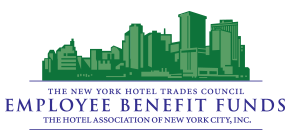Distributions While Employed
Normal Retirement Age is 59 ½. If you continue working under covered employment past Normal Retirement Age, you may withdraw part or all of your account balance.
If you are under 59 ½ and are still working under covered employment, you can apply for a hardship withdrawal. Participants can withdraw certain employer contributions and all pre-tax contributions that they defer to the 401k.
Per Federal Rules, Hardship Withdrawals can be made in cases of immediate and heavy financial need for the following reasons:
- Medical Expenses, incurred by participants, their spouse, primary beneficiary or dependents, which are not reimbursed or paid for by insurance.
- Costs directly related to the purchase of your primary home (excluding mortgage payments), stop eviction from your primary home or to stop foreclosure on your primary home.
- Tuition payments or room and board over the next 12 months of post-secondary education for participants, their spouse, children or other dependents.
- Payment of Funeral Expenses incurred by participants, their spouse, primary beneficiary or dependents.
- Expenses to repair damage to primary home that would qualify for a casualty tax deduction.
- Expenses or losses due to a disaster as declared by the Federal Emergency Management Agency (FEMA).
Distributions After Employment Ends
Participants who terminate their employment and do no return to covered employment can request a distribution from their 401k account. Participants who are under 59 ½ must wait 60 days from the end of their employment to request a distribution from their 401k.
Participants do not have to withdraw their funds upon termination of employment. Their account will continue to be invested under the investment options they have put in place. Participants will still receive gains and losses based on market conditions, as well as the fees and expenses incurred to maintain the account through Principal.
Participants who reach a certain age must begin taking a Required Minimum Distribution (RMD) each year after they terminate covered employment. The RMD age is 72 for participants who turned 72 after January 1, 2020. The RMD age is 70 ½ for those who turned 70 ½ prior to January 1, 2020.
401k Distribution Forms After Employment Ends
There are two ways that you can choose to receive your distribution:
- Cash Distribution – Subject to 20% Federal Tax Withholding. If you are under 59 ½ there is an additional 10% Federal Tax Withholding.
- Direct Rollover – Funds rolled over to another qualified plan and remain tax deferred.
Choosing a Beneficiary
Participants must name a beneficiary when they enroll in the 401k Plan. You may change beneficiaries at any time. Beneficiary designation and changes must be received by the fund over before your death. If you die without naming a beneficiary or your beneficiary pre-deceases you, your account will be paid out in the following order:
- Surviving Spouse
- Natural or Adopted Children (paid in equal shares)
- Estate
Married Participants
Participants who are legally married must choose their spouse as primary beneficiary. However, if your spouse consents by signing a notarized document, you make name someone else as your sole primary beneficiary or split primary beneficiary with your spouse. Married participants can name as many contingent/secondary beneficiaries as they would like without spousal consent. If you do not complete a beneficiary form, your spouse will automatically be your beneficiary
Single Participants
Participants who are not legally married must elect a beneficiary of their choosing before their death. You can name as many primary or contingent beneficiaries as you would like.
 Select Language
Select Language
 Español
Español English
English
